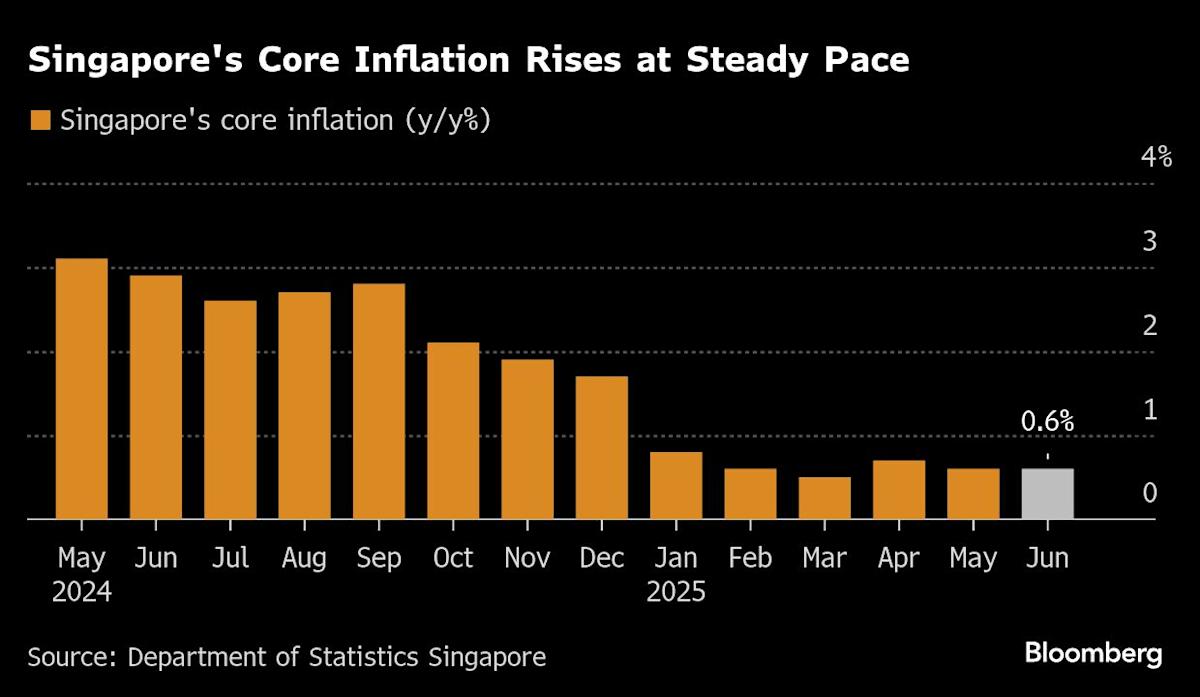(Bloomberg) — Singapore’s central bank will likely leave its monetary policy unchanged for the first time this year, adopting a wait-and-see approach as policymakers gauge looming US tariffs that risk weighing on growth.
Most Read from Bloomberg
Fourteen of 19 economists in a Bloomberg survey forecast the Monetary Authority of Singapore, which uses the exchange rate rather than interest rates to stabilize prices, will maintain its settings on Wednesday. Five, including Goldman Sachs Group Inc. and Bank of America, expect easing to continue.
The MAS loosened policy in January for the first time in five years, and again in April as the case to support the economy became stronger, following US President Donald Trump’s tariff threats and the ensuing global market ructions.
Singapore’s policy review comes ahead of the US Federal Reserve on July 31, with Chair Jerome Powell under increasing pressure from Trump to cut interest rates. The Fed is widely expected to hold steady, as it awaits clarity on the inflation impact from Trump’s tariffs, amid a wave of global cuts from Canada to the UK and Australia.
Forecasters expecting a hold cite Singapore’s economic stability, with preliminary growth estimates this month showing the city-state dodged a technical recession — defined as two consecutive quarters of contraction. The faster-than-expected growth was led by manufacturing, services export and construction.
Chua Hak Bin, economist at Maybank Securities Pte Ltd. sees the MAS leaving its settings unchanged through the rest of the year, “in view of the resilient economic outlook and benign, but stabilizing core inflation.”
By contrast, Kai Wei Ang, Asean economist for Bank of America NA, is predicting an easing though he reckons the decision will be a “close call.”
Ang compared the current situation with April 2016, when the economy was producing close to its potential and yet the MAS eased because core inflation was forecast to average below 2%.
Like in 2016, the economy’s negative output gap has narrowed but the outlook for core inflation appears to be “more benign,” Ang said. At the same time, Singapore’s real effective exchange rate is “elevated,” he said, suggesting the central bank will “instill its preemptive stance by flattening the slope in July, rather than wait till October.”
To meet its mandate of “medium-term price stability,” the MAS intervenes in the foreign exchange market to manage its currency within a range. It describes that process publicly, but only in general terms without providing specific figures or targets.
Story Continues
